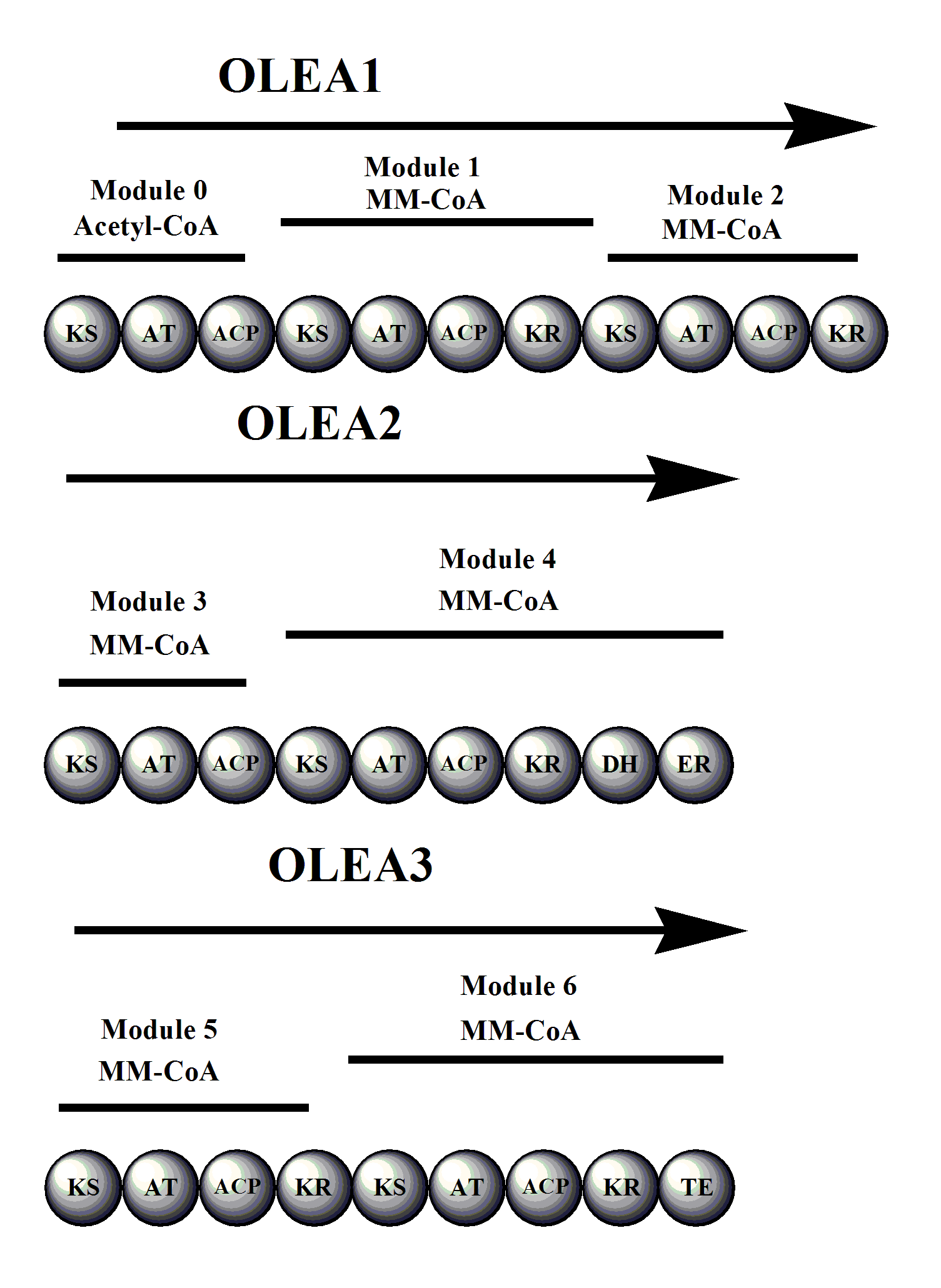|
Oleandomycin
Oleandomycin is a macrolide antibiotic. It is synthesized from strains of ''Streptomyces antibioticus''. It is weaker than erythromycin. It used to be sold under the brand name Sigmamycine, combined with tetracycline, and made by the company Rosa-Phytopharma in France. Medical uses Oleandomycin inhibits the bacteria responsible for upper respiratory tract infections. Its spectrum of activity includes bacteria in the ''Staphylococcus'' and ''Enterococcus'' genera. The MIC for oleandomycin is 0.3-3 μg/mL for ''Staphylococcus aureus''. Oleandomycin is approved as a veterinary antibiotic in some countries. It has been approved as a swine and poultry antibiotic in the United States. However, it is currently only approved in the United States for production uses. Pharmacology Mechanism of action Oleandomycin is a bacteriostatic agent. Like erythromycin, oleandomycin binds to the 50s subunit of bacterial ribosomes, inhibiting the completion of proteins vital to survival ... [...More Info...] [...Related Items...] OR: [Wikipedia] [Google] [Baidu] |
Macrolide Antibiotics
Macrolides are a class of mostly natural products with a large macrocyclic lactone ring to which one or more deoxy sugars, usually cladinose and desosamine, may be attached. Macrolides belong to the polyketide class of natural products. Some macrolides have antibiotic or antifungal activity and are used as pharmaceutical drugs. Rapamycin is also a macrolide and was originally developed as an antifungal, but has since been used as an immunosuppressant drug and is being investigated as a potential longevity therapeutic. Macrolides are a diverse group with many members of very different properties: * Macrolides with 14-, 15-, or 16-membered rings and two attached sugar molecules are antibiotics that bind to bacterial ribosomes, the key representative being erythromycin. The term "macrolide antibiotics" tend to refer to just this class. * Some macrolides with very large (20+ membered) rings are immunosuppresants, the prototypical one being rapamycin. * Some 23-membered macrol ... [...More Info...] [...Related Items...] OR: [Wikipedia] [Google] [Baidu] |
Oleandrose
Oleandrose is a type of carbohydrate with the chemical formula C7H14O4. With a six-carbon chain, it is classified as a hexose. With two hydroxyl groups replaced with hydrogen atoms, it is a dideoxy sugar. The hydroxyl group at C3 is methylated. Occurrence Oleandrdose is found in the leaves of ''Nerium oleander'' and may contribute to the toxicity of the plant. Oleandrose is also a component of several naturally-occurring chemical compounds including the avermectins ( emamectin, abamectins, ivermectin, and others), the macrolide antibiotic oleandomycin, and the cardiac glycoside oleandrin Oleandrin is a cardiac glycoside found in the poisonous plant oleander (''Nerium oleander'' L.). As a main phytochemical of oleander, oleandrin is associated with the toxicity of oleander sap, and has similar properties to digoxin. Oleander has .... Laboratory syntheses of L-oleandrose and DL-oleandrose have been reported. See also * Sarmentose, a diastereomeric dideoxy sugar Referen ... [...More Info...] [...Related Items...] OR: [Wikipedia] [Google] [Baidu] |
Macrolide
Macrolides are a class of mostly natural products with a large macrocyclic lactone ring to which one or more deoxy sugars, usually cladinose and desosamine, may be attached. Macrolides belong to the polyketide class of natural products. Some macrolides have antibiotic or antifungal activity and are used as pharmaceutical drugs. Rapamycin is also a macrolide and was originally developed as an antifungal, but has since been used as an immunosuppressant drug and is being investigated as a potential longevity therapeutic. Macrolides are a diverse group with many members of very different properties: * Macrolides with 14-, 15-, or 16-membered rings and two attached sugar molecules are antibiotics that bind to bacterial ribosomes, the key representative being erythromycin. The term "macrolide antibiotics" tend to refer to just this class. * Some macrolides with very large (20+ membered) rings are immunosuppresants, the prototypical one being rapamycin. * Some 23-membered ... [...More Info...] [...Related Items...] OR: [Wikipedia] [Google] [Baidu] |
Enterococcus
''Enterococcus'' is a large genus of lactic acid bacteria of the phylum Bacillota. Enterococci are Gram-positive cocci that often occur in pairs ( diplococci) or short chains, and are difficult to distinguish from streptococci on physical characteristics alone. Two species are common commensal organisms in the intestines of humans: '' E. faecalis'' (90–95%) and '' E. faecium'' (5–10%). Rare clusters of infections occur with other species, including '' E. durans'' , ''E. casseliflavus'', '' E. gallinarum'', and ''E. raffinosus''. Physiology and classification Enterococci are facultative anaerobic organisms, i.e., they are capable of cellular respiration in both oxygen-rich and oxygen-poor environments. Though they are not capable of forming spores, enterococci are tolerant of a wide range of environmental conditions: extreme temperature (10–45 °C), pH (4.6–9.9), and high sodium chloride concentrations. ''E. faecium'' and ''E. faecalis'' can be differentiated ... [...More Info...] [...Related Items...] OR: [Wikipedia] [Google] [Baidu] |
Staphylococcus
''Staphylococcus'', from Ancient Greek σταφυλή (''staphulḗ''), meaning "bunch of grapes", and (''kókkos''), meaning "kernel" or " Kermes", is a genus of Gram-positive bacteria in the family Staphylococcaceae from the order Bacillales. Under the microscope, they appear spherical ( cocci), and form in grape-like clusters. ''Staphylococcus'' species are facultative anaerobic organisms (capable of growth both aerobically and anaerobically). The name was coined in 1880 by Scottish surgeon and bacteriologist Alexander Ogston (1844–1929), following the pattern established five years earlier with the naming of '' Streptococcus''. It combines the prefix "staphylo-" (from ), and suffixed by the (from ). Staphylococcus was one of the leading infections in hospitals and many strains of this bacterium have become antibiotic resistant. Despite strong attempts to get rid of them, staphylococcus bacteria stay present in hospitals, where they can infect people who are most at ... [...More Info...] [...Related Items...] OR: [Wikipedia] [Google] [Baidu] |
6-Deoxyerythronolide B Synthase
In enzymology, an erythronolide synthase (also 6-Deoxyerythronolide B Synthase or DEBS) is an enzyme that catalyzes the chemical reaction :6 malonyl-CoA + propanoyl-CoA \rightleftharpoons 7 CoA + 6-deoxyerythronolide B Thus, the two substrates of this enzyme are malonyl-CoA and propanoyl-CoA, whereas its two products are CoA and 6-deoxyerythronolide b. This enzyme participates in biosynthesis of 12-, 14- and 16-membered macrolides. This enzyme belongs to the family of transferases, it has been identified as part of a Type 1 polyketide synthase module. DEBS is found in ''Saccharopolyspora erythraea'' and other actinobacteria, and is responsible for the synthesis of the macrolide ring which is the precursor of the antibiotic erythromycin. There have been three categories of polyketide synthases identified to date, type 1, 2 and 3. Type one synthases involve large multidomain proteins containing all the sites necessary for polyketide synthesis. Type two synthases contain activ ... [...More Info...] [...Related Items...] OR: [Wikipedia] [Google] [Baidu] |
Erythromycin
Erythromycin is an antibiotic used for the treatment of a number of bacterial infections. This includes respiratory tract infections, skin infections, chlamydia infections, pelvic inflammatory disease, and syphilis. It may also be used during pregnancy to prevent Group B streptococcal infection in the newborn, and to improve delayed stomach emptying. It can be given intravenously and by mouth. An eye ointment is routinely recommended after delivery to prevent eye infections in the newborn. Common side effects include abdominal cramps, vomiting, and diarrhea. More serious side effects may include ''Clostridioides difficile'' colitis, liver problems, prolonged QT, and allergic reactions. It is generally safe in those who are allergic to penicillin. Erythromycin also appears to be safe to use during pregnancy. While generally regarded as safe during breastfeeding, its use by the mother during the first two weeks of life may increase the risk of pyloric stenosis in ... [...More Info...] [...Related Items...] OR: [Wikipedia] [Google] [Baidu] |
TDP-glucose
Thymidine diphosphate glucose (often abbreviated dTDP-glucose or TDP-glucose) is a nucleotide-linked sugar consisting of deoxythymidine diphosphate linked to glucose. It is the starting compound for the syntheses of many deoxysugars. Biosynthesis DTDP-glucose is produced by the enzyme glucose-1-phosphate thymidylyltransferase and is synthesized from dTTP and glucose-1-phosphate. Pyrophosphate is a byproduct of the reaction. Uses within the cell DTDP-glucose goes on to form a variety of compounds in nucleotide sugars metabolism. Many bacteria utilize dTDP-glucose to form exotic sugars that are incorporated into their lipopolysaccharides or into secondary metabolites such as antibiotics An antibiotic is a type of antimicrobial substance active against bacteria. It is the most important type of antibacterial agent for fighting pathogenic bacteria, bacterial infections, and antibiotic medications are widely used in the therapy .... During the syntheses of many of these ... [...More Info...] [...Related Items...] OR: [Wikipedia] [Google] [Baidu] |
France
France, officially the French Republic, is a country located primarily in Western Europe. Overseas France, Its overseas regions and territories include French Guiana in South America, Saint Pierre and Miquelon in the Atlantic Ocean#North Atlantic, North Atlantic, the French West Indies, and List of islands of France, many islands in Oceania and the Indian Ocean, giving it Exclusive economic zone of France, one of the largest discontiguous exclusive economic zones in the world. Metropolitan France shares borders with Belgium and Luxembourg to the north; Germany to the northeast; Switzerland to the east; Italy and Monaco to the southeast; Andorra and Spain to the south; and a maritime border with the United Kingdom to the northwest. Its metropolitan area extends from the Rhine to the Atlantic Ocean and from the Mediterranean Sea to the English Channel and the North Sea. Its Regions of France, eighteen integral regions—five of which are overseas—span a combined area of and hav ... [...More Info...] [...Related Items...] OR: [Wikipedia] [Google] [Baidu] |
Pfizer
Pfizer Inc. ( ) is an American Multinational corporation, multinational Pharmaceutical industry, pharmaceutical and biotechnology corporation headquartered at The Spiral (New York City), The Spiral in Manhattan, New York City. Founded in 1849 in New York by German entrepreneurs Charles Pfizer (1824–1906) and Charles F. Erhart (1821–1891), Pfizer is one of the oldest pharmaceutical companies in North America. Pfizer develops and produces medicines and vaccines for immunology, oncology, cardiology, endocrinology, and neurology. The company's largest products by sales are the Pfizer–BioNTech COVID-19 vaccine ($11 billion in 2023 revenues), apixaban ($6 billion in 2023 revenues), a pneumococcal conjugate vaccine ($6 billion in 2023 revenues), palbociclib ($4 billion in 2023 revenues), and tafamidis ($3 billion in 2023 revenues). In 2023, 46% of the company's revenues came from the United States, 6% came from Japan, and 48% came from other countries. Pfizer has been a publi ... [...More Info...] [...Related Items...] OR: [Wikipedia] [Google] [Baidu] |





